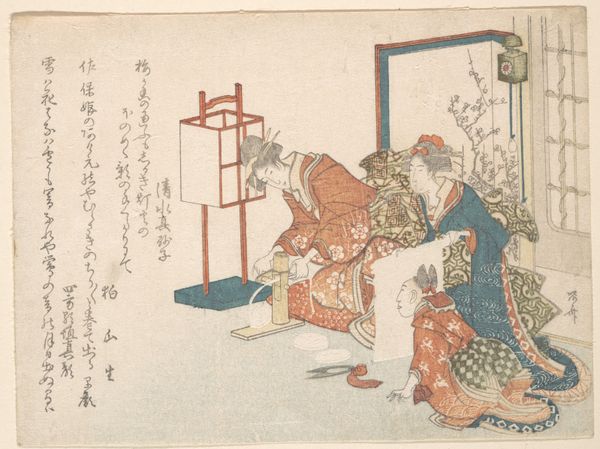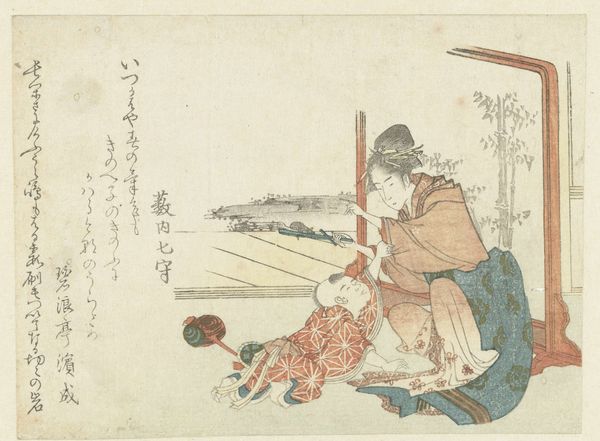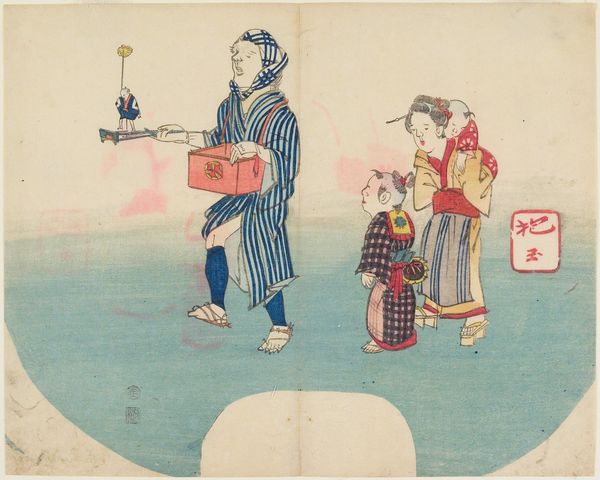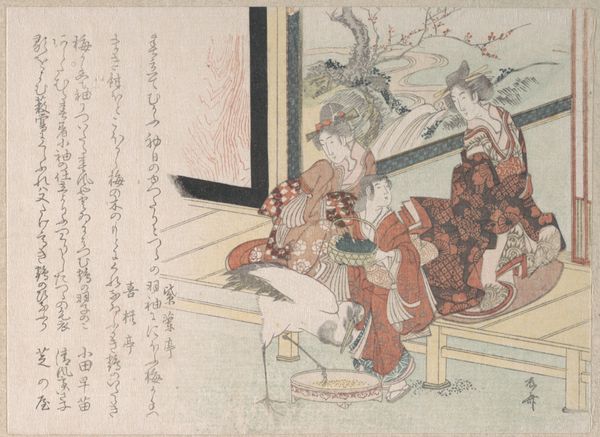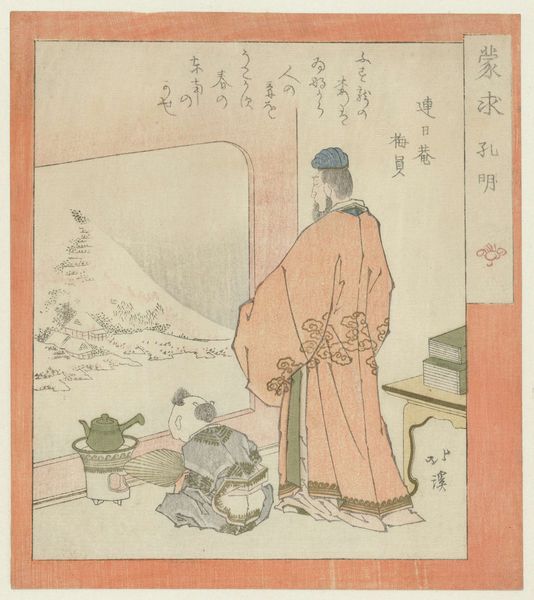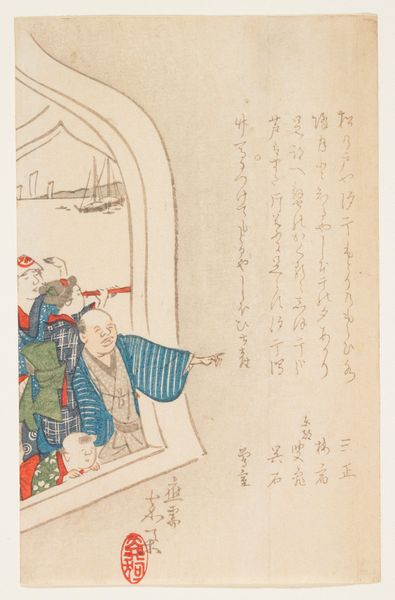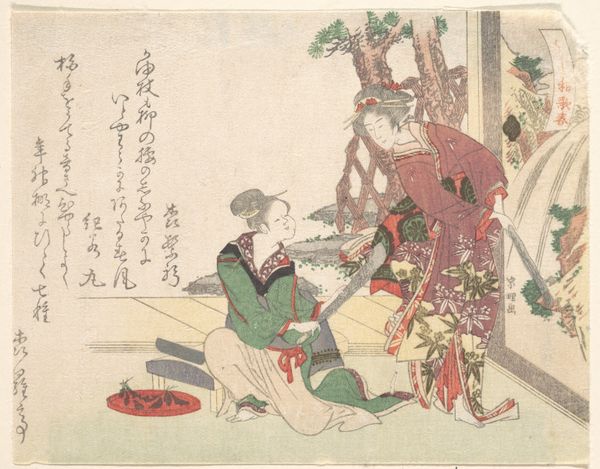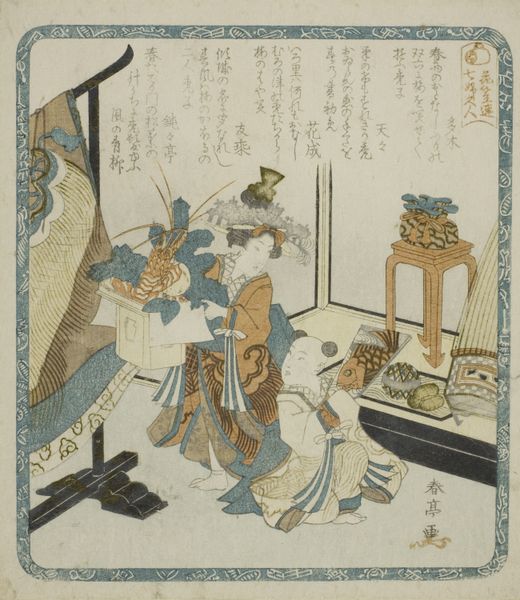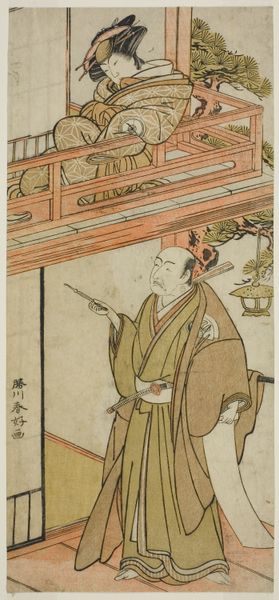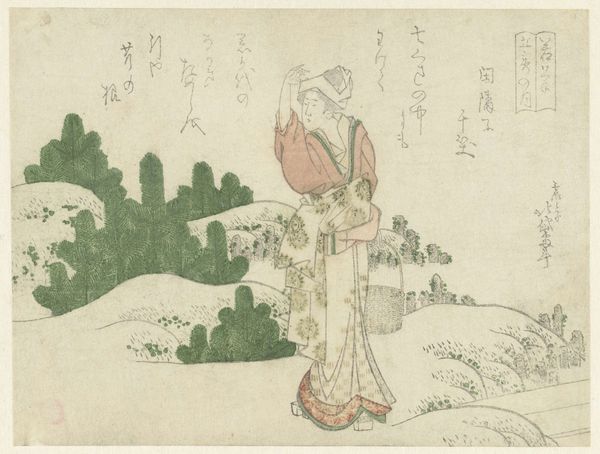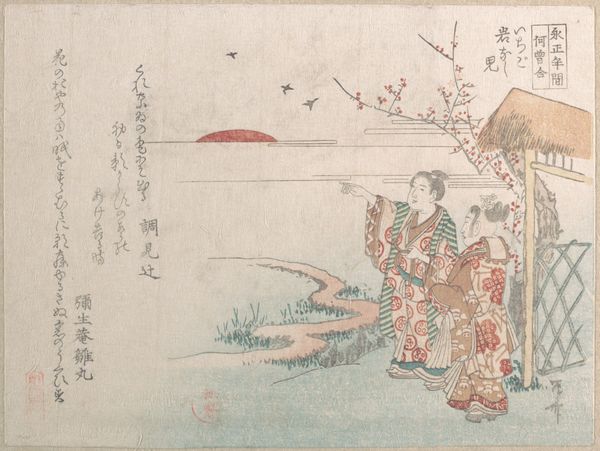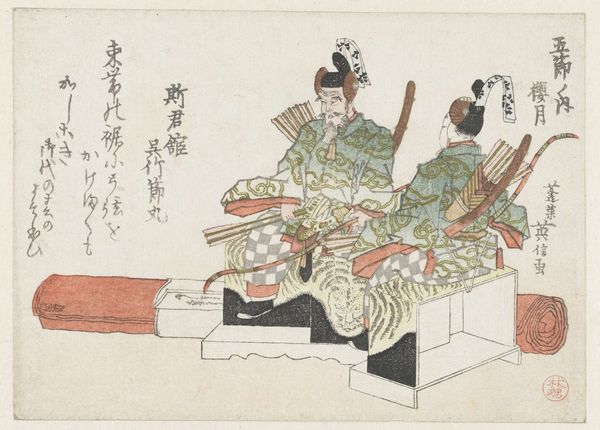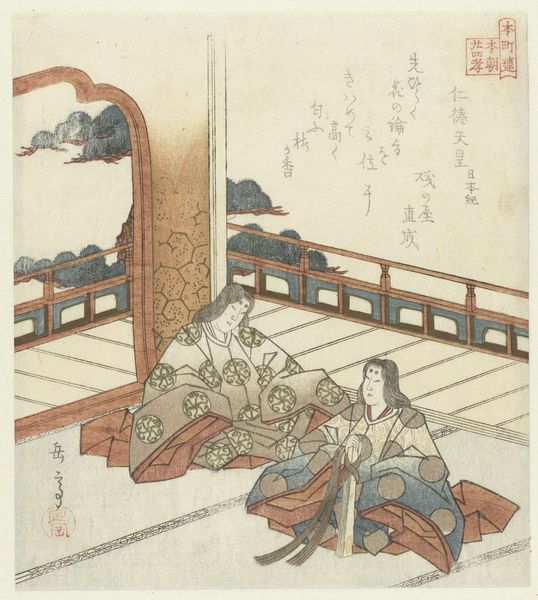
print, woodblock-print
# print
#
asian-art
#
landscape
#
ukiyo-e
#
figuration
#
historical fashion
#
woodblock-print
#
genre-painting
Dimensions: height 135 mm, width 181 mm
Copyright: Rijks Museum: Open Domain
Curator: Hishikawa Sōri created this captivating woodblock print, "Two Women on a Shrine Visit," around 1804. The print now resides in the collection of the Rijksmuseum. I am immediately struck by how ordinary, how domestic it feels. Editor: Despite its delicate nature, it's teeming with layers. These are not just "women," they're carriers of symbolic weight within this society. That first figure, holding perhaps a swaddled baby— a representation of renewal, new beginnings, and, naturally, societal continuity. Curator: Exactly! Considering this is an Ukiyo-e print, it was designed for mass production. This informs how we view its impact on 19th century consumers. Were such prints a way to broadcast very traditional roles for women or did people appreciate them solely for aesthetics and affordable access to artistic expressions? Editor: Well, examine how the garments are rendered with patterns holding multiple meanings. We see on one dress a kind of swastika shape that has been culturally co-opted by nefarious factions in more recent history, and yet is not tied at all to those factions in Japanese history and the work's moment. In other words, these symbols resonate quite powerfully within and beyond Japanese cultural memory and perhaps meant blessings, or continuity and could signify a connection to cosmic forces, enhancing her revered status in the depicted context. Curator: You bring up a great point. We must remember the historical distance and its effects on cultural comprehension and reception. Given the meticulous production of each print, it underscores how labor-intensive such projects were, which ultimately added economic value to the object, despite the intention of affordability for mass consumption. It's not just an image; it represents time, process and production. Editor: And I see how easily, despite its quietude, such everyday activities transformed to represent layers of historical context. These women attending a shrine is less a snapshot, and more a portal into cultural traditions passed, transformed and lasting eras. Curator: Precisely. Investigating the raw materials needed for this art sheds even more light into our comprehension. And to bring all of that insight together? It shifts the conversation around Ukiyo-e art and challenges its place within art history. Editor: Seeing beyond just 'genre painting', understanding those lasting themes reflected via the symbolism reminds me of why studying art matters. Thanks!
Comments
No comments
Be the first to comment and join the conversation on the ultimate creative platform.
